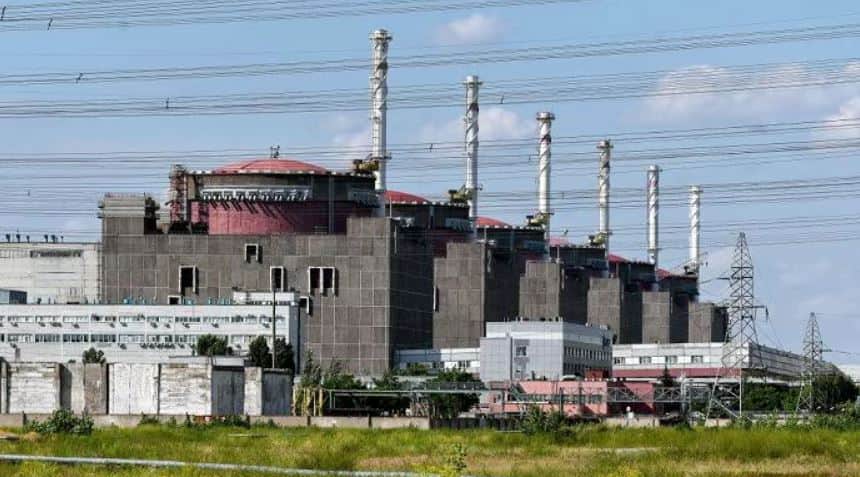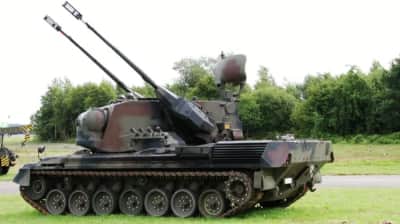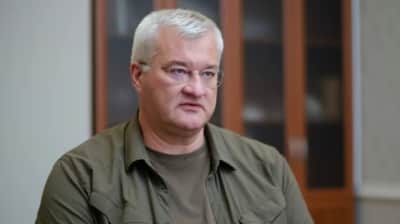ZNPP power units cooled down for almost a year, risks to population are minimal – ZNPP employee

One of the employees of the Russia-occupied Zaporizhzhia Nuclear Power Plant (ZNPP), who is still working at the plant, revealed on condition of anonymity that the ZNPP power units have been cooled for almost a year, so the risk of radionuclide emission has decreased significantly. The Russian occupation forces may damage the power plant, but so far they are not in the reactor halls.
Source: an employee who is still working at the ZNPP, in an interview with the Suspilne media outlet
Quote: "Despite the fact that the ZNPP power units have been cooled down for almost a year, which significantly decreases the risk of the emission of radionuclides that may pollute the territory, if you set a goal and involve experts, you can cause a lot of damage.
The [occupying forces’ - ed.] goal may be to put the power plant out of service as an economic facility. They could do it quickly by damaging a generator or a turbine and shutting the ZNPP down for a long time. This is one of the most likely scenarios that may occur during the retreat of the Russian forces.
They could blow up the dam of the cooling pool; this is a less critical option. At the moment, the level of water in it is being thoroughly monitored as it is a cooling source for non-active power units, reactors and pools with spent fuel.
But this scenario is extended in time and therefore less critical. They can also blow up turbine halls with their vehicles, which are most likely loaded with explosives. The blowing up of the turbine halls will have a lasting negative economic effect.
If they really wanted to cause a nuclear disaster, they could arrange an emission from the condenser of the nuclear reactor. They would have to blow up the reactor inside and disrupt the integrity of the equipment. Will they resort to this? I don’t know. But they are not present in the reactor halls."
Details: The ZNPP employee believes that the risks to the population are minimal at the moment, since the power units are not operating and are not producing radioactive substances.
The most volatile and hazardous radioisotopes have decayed during the period since the Russian occupation.
He added that there are long-lived radionuclides, but significant damage to the power plant and a series of explosions, which first damage the reactor and then scatter the radionuclides, are needed for their emission into the environment.
The employee added that between the Kakhovka Reservoir and a cooling pool there is a dam: "The reservoir has drained away. The level [of water – ed.] in our cooler has always been higher than in the reservoir, but not significantly. There was water pressure on the dam from two sides, and so the water flow was not intense. So, controlled water discharges from the pool to the reservoir and vice versa were conducted; the pool was being fed with fresh water from the reservoir. Now, there is no reservoir, and we cannot supply the pool with water, but if the Russians blow up the dam, the water will flow into an empty reservoir."
If the Russian occupation forces blow up this dam, then the ZNPP will be left without a cooling pool. This will lead to the block transformers of the ZNPP losing cooling water, and the employees will have to shut them down or they will burn down.
Then, they will have to shut down the main power line as well.
Background:
- Kyrylo Budanov, Chief of Defence Intelligence of Ukraine, said that the risk of a Russian terrorist attack on the occupied Zaporizhzhia Nuclear Power Plant is "slowly decreasing".
- Kyrylo Budanov supposes that the threat of an explosion at the Zaporizhzhia Nuclear Power Plant (ZNPP) is real, since the occupiers have also mined the cooler.
- On 22 June, President Volodymyr Zelenskyy said that Russia is probably preparing to commit a terrorist attack at the Zaporizhzhia Nuclear Power Plant, which could lead to a radiation leak.
Journalists fight on their own frontline. Support Ukrainska Pravda or become our patron!






